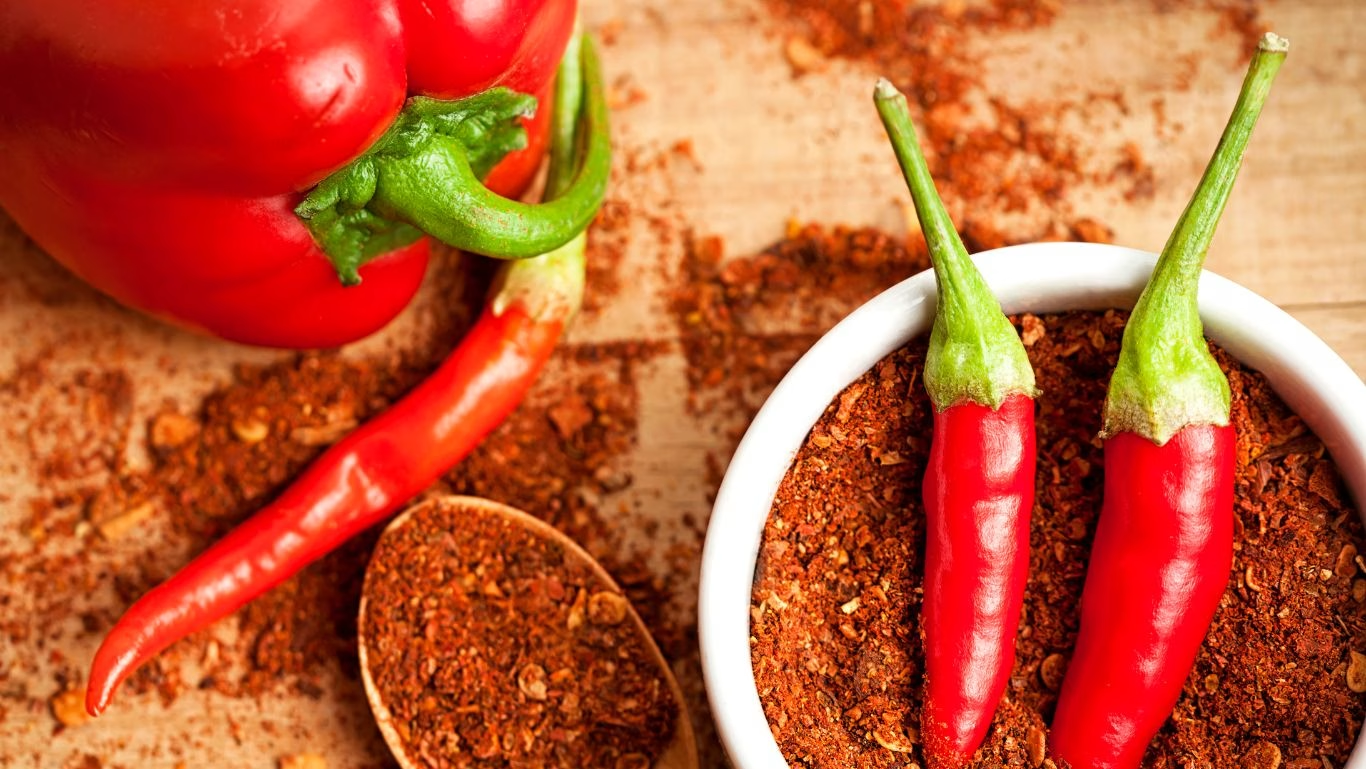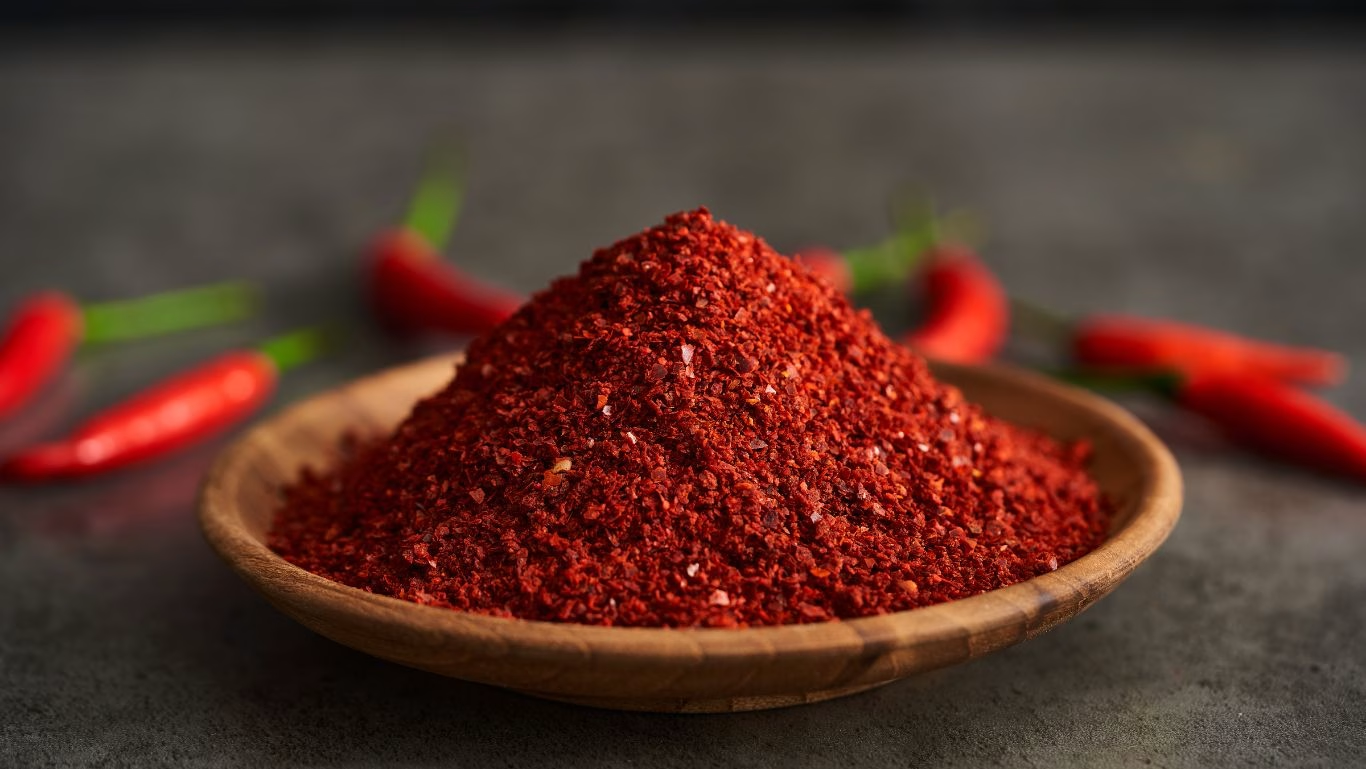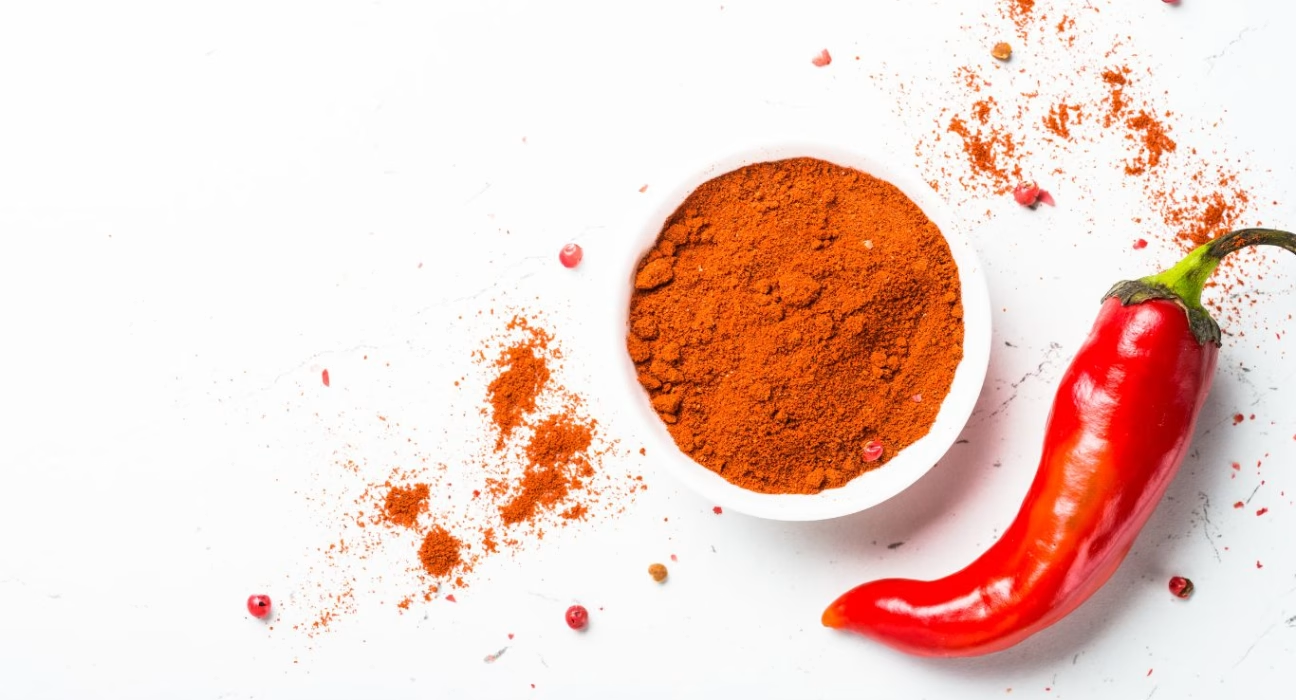Cayenne pepper is a hot chili spice (Capsicum annuum) prized for its bright red color and strong heat. It hails from Central and South America, where indigenous peoples have used Capsicum peppers for thousands of years.
The name comes from Cayenne, the capital of French Guiana, reflecting its New World origins. Today, cayenne is dried and ground into a vivid red powder or used fresh, and it adds a pungent kick to cuisines worldwide while also delivering health-promoting compounds.
More: Goji berries: The superfood that boosts your health
Calories and metabolism effects
Cayenne pepper is extremely low in calories. A heaping ¼ teaspoon (about 0.5 g) of ground cayenne has only about 1–2 calories (roughly 6 calories per full teaspoon). Despite the negligible caloric cost, its active ingredient, capsaicin, can slightly boost metabolism. Studies show that spicy foods “rev up the metabolism a bit, helping burn calories,” and can also increase feelings of fullness.
In other words, cayenne’s capsaicin produces a mild thermogenic effect (raising body heat) and mild appetite suppression, which may contribute to weight management as part of an overall healthy diet.
More: 10 superfoods for over 40


Proven health benefits of Cayenne Pepper
Cayenne packs more than just heat – it offers several scientifically supported health benefits:
Rich in Nutrients and Antioxidants: Cayenne peppers provide significant vitamins and antioxidants. For example, one fresh cayenne contains about 72% of the daily vitamin C requirement and 50% of vitamin A. They are also loaded with plant compounds like flavonoids and carotenoids that have antioxidant and anti-inflammatory effects. These antioxidants help protect cells from damage and may support overall health and aging.
Heart and Circulatory Health: Research suggests capsaicin can improve circulation and blood vessel function, which supports heart health. Studies find that people who eat hot peppers regularly have lower rates of heart-related deaths (one large study showed spicy-food eaters were 13% less likely to die of cardiovascular causes). Cayenne may also help lower blood pressure: by substituting a bit of cayenne for salt, you get flavor with less sodium intake, which is good for blood pressure.
Digestive Aid: Rather than upsetting the stomach, cayenne can actually help digestion. It stimulates gastric juices and digestive enzymes, improving the breakdown and absorption of food. It may also favor a healthy gut microbiome. (That said, people with acid reflux or sensitive stomachs should use it cautiously.)
More: Acidic vs. alkaline: Balance in health and environment
Pain and Congestion Relief: Topical capsaicin (derived from cayenne) is well-known for pain relief: capsaicin creams can reduce joint and muscle pain (e.g., arthritis) by depleting a pain transmitter (substance P). In the diet, cayenne’s heat can temporarily open nasal passages and help relieve congestion or headache when you’re stuffy. For example, enjoying a spicy chili or adding cayenne to a hot tea is an old folk remedy to clear a stuffed-up nose.
Weight Management: As noted, capsaicin can raise core body temperature and burn a few extra calories. In controlled studies, even small doses of capsaicin reduced appetite and body fat slightly over time. One study gave volunteers 4 mg of capsaicin daily for 12 weeks and saw about a 6% drop in body fat versus placebo. While cayenne alone won’t melt pounds, it can be a useful spice to make meals more satisfying and slightly more thermogenic.
Keep in mind that most evidence comes from controlled studies of capsaicin or spicy diets; adding cayenne to food may have milder effects, but it still contributes nutrients and plant compounds to the diet.
How to use Cayenne Pepper (Recipes and serving suggestions)
Cayenne pepper is very versatile. You can use either fresh whole peppers or the dried powder. Here are some ways to incorporate it into meals (always adjust to your heat tolerance):
Savory dishes: Sprinkle cayenne into soups, stews, chili, pasta sauces, or egg dishes for an extra kick. For example, a pinch of chili con carne, curry, or jambalaya adds warmth without salt.
Beverages: Mix a bit into drinks. A popular use is Mexican-style hot chocolate spiced with cayenne. Some also stir a dash into coffee or tea for a warming effect.
Marinades and dressings: Add cayenne to marinades, barbecue rubs, or vinaigrettes. Combining it with olive oil, vinegar, and herbs makes a zesty dressing or rub for meats and vegetables.
Baking and sweets: Surprisingly, a small pinch of cayenne can enhance baked goods – for instance, a hint in chocolate cake, brownies, or cornbread complements the sweetness. A dash in fruit-based desserts (e.g., a spiced apple pie) is another idea.
Snack Foods: Mix cayenne into dips (hummus, guacamole) or sprinkle on popcorn or roasted nuts for a spicy snack.
Tip: Start with a small amount (around 1/8–1/4 teaspoon) if you’re new to spicy food and increase as you like. Because cayenne is quite hot (30,000–50,000 Scoville units), a little goes a long way. Always wash your hands after handling fresh peppers, and avoid touching your eyes to prevent irritation.
More: Healing through nature: How the environment restores our well-being
Precautions and possible side effects
Cayenne is safe for most people in culinary amounts, but a few cautions are wise:
Stomach upset: Spicy foods can irritate the stomach or esophagus in sensitive individuals. Cayenne may worsen heartburn, acid reflux, or stomach ulcers in susceptible people. Those with GERD or irritable bowel syndrome often find cayenne aggravating.
Skin and eye irritation: Capsaicin oil can cause burning or stinging of mucous membranes. Handling fresh peppers can cause skin or eye irritation, so wash your hands and utensils thoroughly after use.
High-dose risks: While adding spice to food is generally harmless, very high doses of concentrated capsaicin (as in some supplements) have been linked to serious effects. Rarely, excessive capsaicin has caused irregular heartbeat, high blood pressure spikes, and even heart attacks. Stick to normal culinary amounts.
Allergic Reactions: A true cayenne allergy is rare, but as with any food, watch for hives, swelling, or breathing difficulty. Immediate medical attention is needed if you have signs of anaphylaxis.
In general, moderate use of cayenne pepper as part of food is considered safe. However, anyone with pre-existing gastrointestinal issues, heart conditions, or taking certain medications should consult a healthcare provider before using medicinal capsaicin products.
Conclusion: Why include Cayenne Pepper in your diet?
With its zesty flavor and rich nutrient profile, cayenne pepper is more than just a hot spice. It delivers vitamins (A and C), antioxidants, and capsaicin in virtually calorie-free form. Nutrition experts note that cayenne is “chock-full of health benefits” and has been linked to improved circulation and even longevity.
In practical terms, using cayenne allows you to flavor food with less salt and fat, and it may slightly boost your metabolism and protect against cell damage. In short, this fiery spice is a simple, evidence-backed way to “spice up” both your meals and your health routine. By incorporating a pinch of cayenne into cooking or seasoning, you gain flavor and potentially a range of benefits – all of which explain why many nutritionists encourage keeping cayenne pepper in the spice rack.
Source:
Cayenne pepper: Health benefits, nutrition, and tips
5 Health Benefits of Cayenne Pepper













